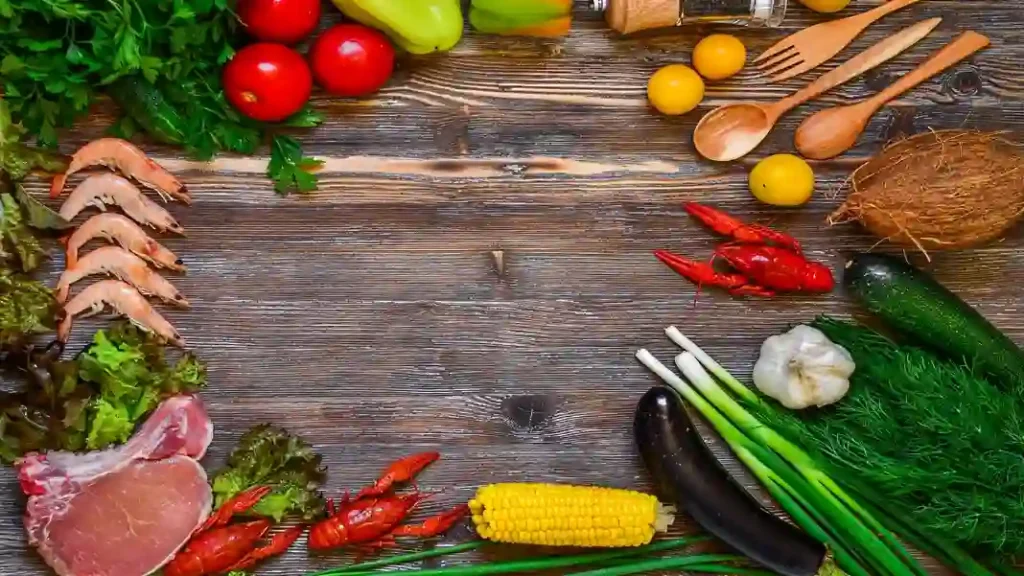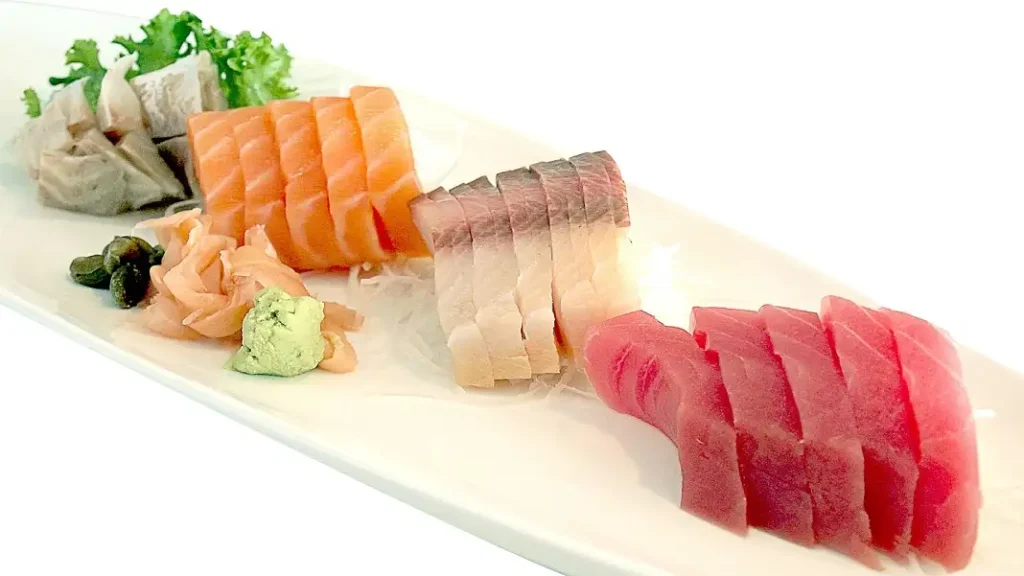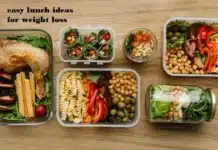Table of Contents
Introduction
In recent years, GLP-1 medications like Ozempic, Mounjaro, and Trulicity have taken the health and wellness world by storm. Originally developed for managing type 2 diabetes, these medications have gained widespread popularity as a powerful tool for weight loss. With their ability to reduce appetite and slow down digestion, GLP-1 medications are transforming the way people approach weight management. However, while these medications can help you shed pounds, they also come with specific dietary considerations that must be carefully addressed to maximize their effectiveness.
This is where the GLP-1 diet comes into play. Tailored specifically to complement the effects of GLP-1 medications, this diet focuses on meeting your body’s nutritional needs while promoting sustainable weight loss. A GLP-1 nutrition plan emphasizes the consumption of nutrient-dense foods that provide essential vitamins, minerals, proteins, and healthy fats, while helping you manage your reduced appetite. Understanding how to balance these elements within the confines of a reduced caloric intake is crucial for success.
Whether you’re new to GLP-1 medications or looking to optimize your approach, a well-structured diet with GLP-1 medications can ensure that you not only lose weight but also nourish your body for long-term health. By focusing on the right foods and adopting a thoughtful nutritional strategy, you can support your weight loss goals and maintain a healthy, energized lifestyle throughout your journey.
What is the GLP-1 Diet ?
GLP-1 medications, such as Ozempic, Mounjaro, and Trulicity, have become increasingly popular for their role in weight management. These medications are designed to mimic a naturally occurring hormone in the body called glucagon-like peptide-1 (GLP-1). This hormone plays a critical role in regulating digestion, insulin release, and appetite. By activating GLP-1 receptors, these medications slow down gastric emptying, reduce hunger, and enhance insulin sensitivity. As a result, users often experience a decreased desire to eat, which leads to reduced caloric intake and, ultimately, weight loss.
The GLP-1 diet is tailored to support the unique effects of these medications. While these drugs make it easier to eat less by reducing hunger, they also slow digestion, meaning that the body may require fewer, but more nutrient-dense meals. For people using GLP-1 medications, it becomes essential to focus on nutrient density rather than just calorie count. This is because eating a smaller volume of food may result in insufficient intake of key nutrients if the right choices aren’t made.
A diet with GLP-1 medications must be carefully crafted to include a balanced mix of proteins, healthy fats, and fiber, along with vitamins and minerals that support overall health. Nutrient-dense foods like lean proteins, vegetables, and whole grains help to meet nutritional needs without overwhelming the digestive system. Since the body’s natural hunger cues are dulled, it’s crucial to prioritize these nutrient-rich foods to ensure that the body receives adequate nutrition while still maintaining a calorie deficit. Focusing on high-quality, easy-to-digest foods will not only support weight loss but also help maintain energy levels and promote long-term wellness.
The Importance of Nutrient Density in a GLP-1 Diet

When following a GLP-1 nutrition plan, the focus should shift from traditional calorie counting to prioritizing nutrient-dense foods. While calorie control is an essential component of weight loss, GLP-1 medications alter how the body responds to hunger and fullness cues. As appetite diminishes and digestion slows down, it becomes more challenging to consume the necessary volume of food to meet your nutritional requirements. This is where nutrient density plays a crucial role.
Rather than merely tracking calories, individuals on a GLP-1 diet should aim to choose foods that pack the most nutritional punch per bite. Nutrient-dense foods are those that provide a high amount of vitamins, minerals, protein, healthy fats, and fiber relative to their calorie content. This shift ensures that, even with reduced food intake, the body still receives the essential nutrients it needs to function optimally.
So, what are the best foods for a GLP-1 diet? Focus on options that are rich in proteins, healthy fats, and fiber—these are key to maintaining energy, supporting muscle mass, and promoting feelings of fullness. Examples include lean proteins like chicken breast, fish, and tofu, as well as healthy fats from avocados, nuts, and olive oil. Fiber-rich foods, such as leafy greens, beans, and whole grains, also play a vital role in digestion and overall health. These foods are not only packed with nutrients but are also easier to consume in smaller portions, which is essential for those on GLP-1 medications.
By emphasizing nutrient-dense foods, a GLP-1 nutrition plan can help maintain balanced energy levels, prevent nutrient deficiencies, and support long-term weight loss goals. This approach ensures that your body is nourished, even when appetite is reduced, allowing for sustainable health benefits.
Best Foods for an Effective GLP-1 Diet

When following a GLP-1 nutrition plan, it’s crucial to choose foods that not only align with your weight loss goals but also support your body’s nutritional needs, especially when appetite is reduced. The right foods can make all the difference in maintaining muscle mass, digestive health, and overall well-being.
High-Quality Proteins are essential for preserving muscle mass, which can be a concern when eating fewer calories. Protein is crucial for repairing tissues, supporting immune function, and maintaining muscle strength. Lean meats such as chicken breast, turkey, and fish, as well as plant-based sources like tofu and tempeh, are excellent protein choices for a diet with GLP-1 medications. Incorporating a variety of high-quality proteins ensures your body gets all the essential amino acids it needs without overwhelming your digestive system.
Fiber plays a significant role in digestive health, helping to regulate bowel movements and promote feelings of fullness. It also supports heart health and helps stabilize blood sugar levels. For those on a GLP-1 diet, high-fiber foods such as leafy greens, beans, lentils, and whole grains are perfect for maintaining regular digestion and preventing constipation. Fiber-rich foods not only aid in weight loss by keeping you feeling fuller for longer, but they also contribute to better gut health overall.
In addition to protein and fiber, Healthy Fats are essential for long-term health. Healthy fats, found in foods like avocados, nuts, seeds, and olive oil, support brain function, hormone regulation, and the absorption of fat-soluble vitamins. They also contribute to satiety, helping you feel satisfied without overeating. Since best foods for a GLP-1 diet need to be nutrient-dense and low in volume, these fats are ideal for meeting your calorie and nutrient goals while still being easy to consume.
The best foods for GLP-1 diet should be high in protein, fiber, and healthy fats, but low in volume and calories, ensuring they fit seamlessly into the unique needs of those using GLP-1 medications. By focusing on these nutrient-rich, easily digestible foods, you can optimize your GLP-1 nutrition plan and promote sustainable weight loss.
Calculating Nutritional Needs in a GLP-1 Plan
Creating a GLP-1 nutrition plan that meets your body’s needs while promoting weight loss requires careful attention to your daily calorie and macronutrient intake. Since GLP-1 medications alter your appetite and digestion, understanding how to calculate and track these needs is key to ensuring you’re nourishing your body effectively.
Adapting Calorie and Macronutrient Needs
To create a balanced GLP-1 nutrition plan, start by calculating your daily calorie needs based on your body weight and weight loss goals. A basic formula involves multiplying your current body weight (in pounds) by a factor between 10 to 12, depending on your activity level. This gives you an estimate of how many calories you should consume to maintain your current weight. To promote weight loss, aim for a 10-20% calorie deficit, but be sure to never go too low, as your body still needs enough fuel to function properly, especially on a reduced appetite.
In addition to calories, calculating your macronutrient distribution is essential. A general guideline for a GLP-1 nutrition plan could be:
- Protein: 25-30% of total calories. Protein helps preserve muscle mass, which is critical when eating fewer calories.
- Fat: 25-35% of total calories. Healthy fats support brain function and provide satiety.
- Carbohydrates: 35-50% of total calories. Opt for complex carbohydrates, such as whole grains, vegetables, and legumes, to maintain energy levels and digestive health.
Tracking the GLP-1 Nutrition Plan
Once you’ve established your daily needs, tracking your meals and snacks throughout the day can ensure you’re meeting these targets. Using a food journal or app can help you stay on track with your calorie and macronutrient intake. It’s also important to adjust your meals based on your hunger levels and fullness cues, especially when taking GLP-1 medications. For instance, if you’re feeling fuller quicker than usual, focus on nutrient-dense, smaller portioned meals to meet your protein, fat, and fiber targets without overloading your stomach.
Here’s a sample breakdown of daily caloric and macronutrient needs for someone following a GLP-1 nutrition plan:
| Parameter | Amount (per day) |
| Total Calories | 1,800–2,000 kcal |
| Protein | 135–150 grams (30%) |
| Fat | 50–70 grams (30%) |
| Carbohydrates | 180–250 grams (40%) |
By carefully calculating and tracking your intake, you can optimize your GLP-1 nutrition plan for effective weight loss and sustained energy.
Practical Tips for Succeeding on a GLP-1 Diet
Embarking on a diet with GLP-1 medications requires thoughtful strategies to ensure nutritional needs are met while supporting weight loss. Since GLP-1 medications can reduce appetite and slow digestion, it’s crucial to adapt your eating habits and monitor your progress in ways that go beyond just counting calories.
Frequent, Smaller Meals
One of the most effective strategies for succeeding on a GLP-1 nutrition plan is to eat smaller, more frequent meals throughout the day. Because GLP-1 medications can reduce hunger, it’s important to ensure that you’re still consuming enough calories and nutrients to fuel your body without feeling overly full. Breaking your meals into 4-6 smaller portions can help spread your intake of proteins, healthy fats, and fiber across the day. This also ensures you’re able to maintain energy levels and avoid nutrient deficiencies, which can arise from under-eating.
Hydration
Staying hydrated is essential, particularly when following a GLP-1 diet. GLP-1 medications can slow down your digestion, leading to a feeling of fullness and potentially causing gastrointestinal issues like constipation. Additionally, dehydration can worsen these side effects. To combat this, aim to drink water regularly throughout the day, especially before and during meals. Staying hydrated also supports your metabolism and helps maintain healthy skin, energy levels, and digestion.
A good hydration strategy includes drinking at least 8 ounces of water every 2-3 hours and more if you’re physically active. If you’re experiencing digestive discomfort, adding electrolytes to your water can help balance fluids and prevent dehydration.
Measuring Progress
While weight loss is often a primary goal, there are other ways to measure success on a GLP-1 nutrition plan. Beyond the scale, tracking improvements in strength, endurance, and overall well-being is just as important. Consider how you feel during workouts: Are you able to increase your sets, reps, or weights? Have you noticed improvements in energy levels or stamina during physical activity? Also, pay attention to how your clothes fit or how your body measurements change. Non-scale victories like these often provide a more holistic view of your progress.
In summary, for success on a diet with GLP-1 medications, focus on eating smaller, more frequent meals, staying hydrated, and measuring your progress in multiple ways. These practices will help you stay on track and achieve long-term results.
Conclusion
In conclusion, a GLP-1 diet plays a crucial role in supporting effective weight loss while ensuring your body’s nutritional needs are met. The focus should be on nutrient-dense foods that provide adequate protein, fiber, and healthy fats, especially as appetite and digestion are affected by GLP-1 medications. By prioritizing high-quality protein sources, fiber-rich foods, and healthy fats, you can maintain muscle mass, improve digestive health, and promote satiety, even when dealing with reduced appetite.
Equally important is understanding how to adapt to the unique needs of a diet with GLP-1 medications, including adjusting meal frequency, staying hydrated, and monitoring progress beyond just the scale. This tailored approach not only supports weight loss but also ensures overall health and well-being.
However, as with any dietary change, it’s vital to consult with a healthcare professional or dietitian to personalize your GLP-1 nutrition plan. A dietitian can help customize your plan based on your weight loss goals, lifestyle, and dietary preferences, ensuring you get the most out of your GLP-1 medications while achieving long-term, sustainable results.
By following these key guidelines and seeking professional guidance, you can optimize your nutrition and make the most of your GLP-1 diet journey, leading to a healthier and more balanced lifestyle.



